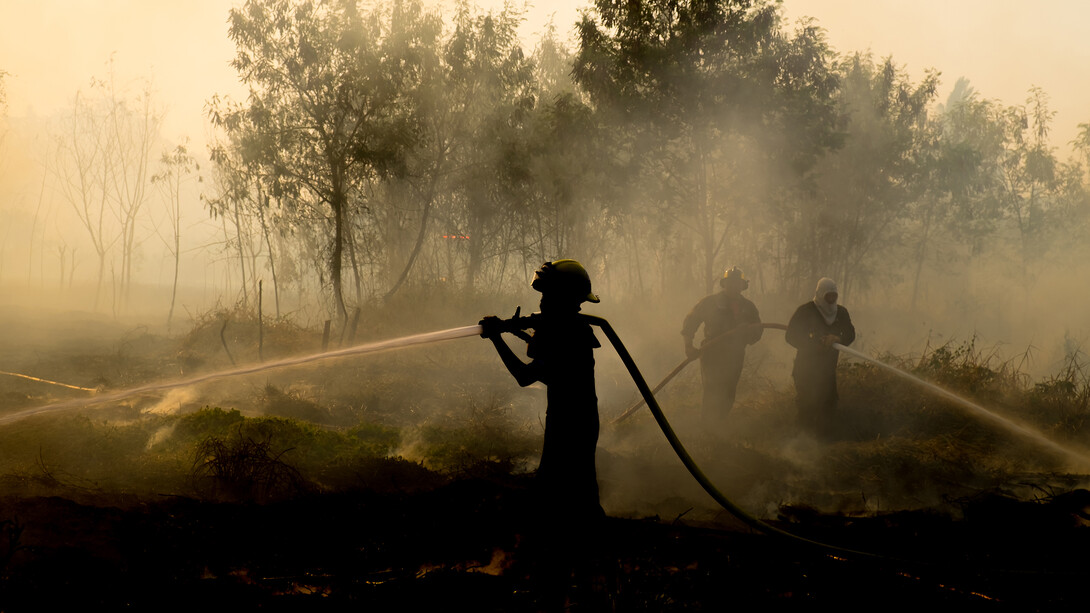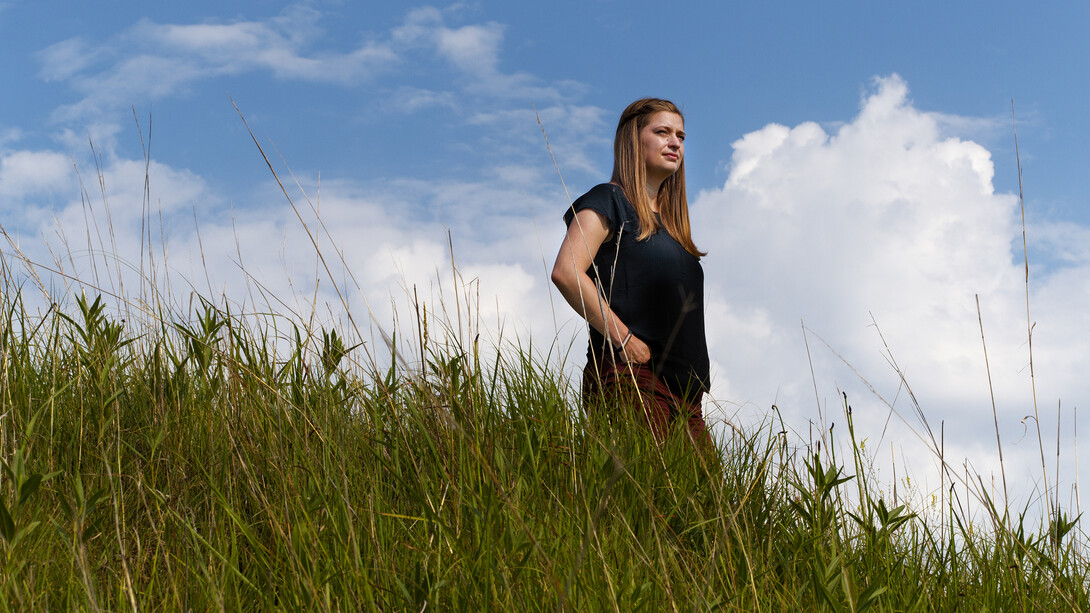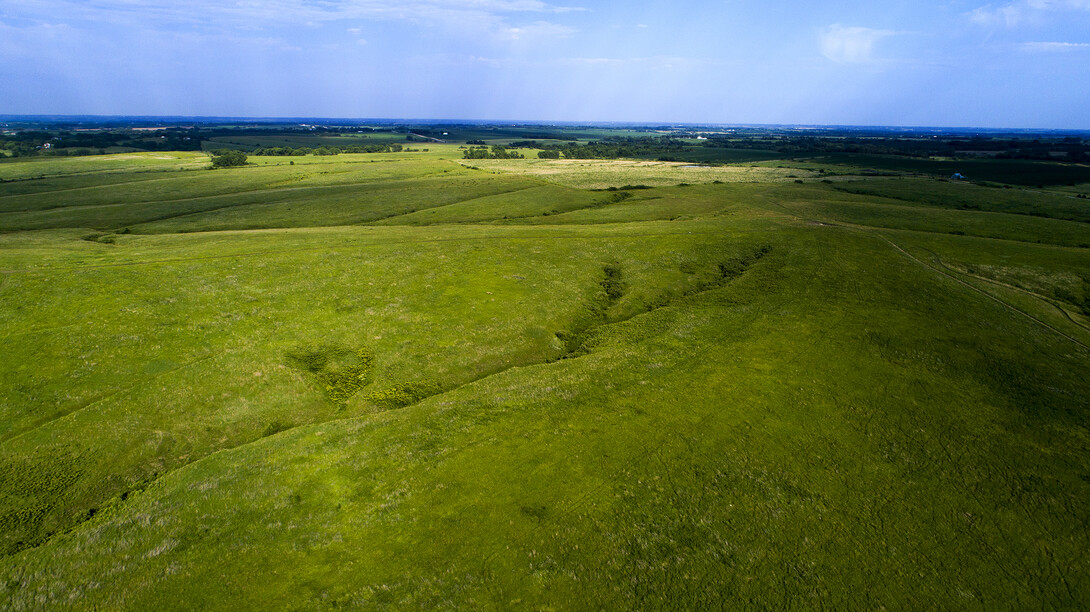
After a century of attempts to eradicate wildfires, the Great Plains region is experiencing a sharp resurgence in the number of large wildfires breaking out each year, according to new research from the University of Nebraska-Lincoln.
Using remote sensing data collected by the USDA Forest Service and the U.S. Geological Survey, the Nebraska research team documented that the number of fires occurring each year has tripled in the Great Plains during the past three decades.
The first in-depth study to document changing wildfire patterns across the entire Great Plains region, it also indicates the average area of land annually burned by wildfire has grown by more than 400 percent, from thousands of acres per year between 1985 to 1994 to millions of acres per year from 2005 to 2014.
“Great Plains states have recorded some of their worst wildfire seasons on record during the past 10 to 15 years,” said Victoria Donovan, a doctoral student in agronomy and horticulture and lead author of the study.

“The Great Plains will be the next wildfire frontier. We’re the next Rocky Mountains. We’re the next California.”
— Dirac Twidwell, ecologist
Co-author Dirac Twidwell, an ecologist who specializes in rangeland and fires, said the study is part of a larger effort to better understand the connections between human activity and the grasslands ecosystem of the Great Plains.
“The Great Plains will be the next wildfire frontier,” he said. “We’re the next Rocky Mountains. We’re the next California.”
Post-doctoral researcher Carissa Wonkka assisted with the study’s statistical analysis. She said the study documents a substantial increase in the average number of wildfires, from 33 per year in 1985-94 to 117 per year in 2005-14, in an area long considered at low risk for wildfires.
“This has major implications for wildfire planning in the United States,” she said. “Most of the wildland fire resources are tied up in areas that are considered high-risk regions and there already is an enormous and increasing strain on those resources.”
While the statistics seem astonishing, they’re not unexpected to ecologists who have been observing regional changes in wildfire patterns, Twidwell said.
During the past century, Great Plains residents have been enormously successful at suppressing and eradicating fires, he said. Yet those very efforts have contributed to a situation that now makes the region more vulnerable to fire.
Conifers such as eastern red cedar and ashe juniper, often planted near homes and buildings to create windbreaks, have widely spread, creating a build-up of fuels that are particularly volatile during dry spells. More people live on the edges of wild lands, increasing the chances of human ignition — and the odds that they will fall victim to wildfire. Recent severe droughts also have contributed to the possibility of fire.
“Over the generations, changes that we’ve taken for granted have begun to reach tipping points, resulting in surprises, tragedies and disaster,” he said.

Donovan and the research team assessed each of 14 ecoregions in the Great Plains, from the Northwestern Glaciated Plains of Montana to the Western Gulf Coastal Plains in Texas and Louisiana.
They found each region had experienced changes in fire patterns, whether increases in number, frequency and area burned or fluctuations in the seasons during which fires most likely occur.
The increases in number and area burned were driven largely by changes in the western and southern reaches of the Great Plains.
The likelihood of large wildfires occurring each year grew significantly in southern Texas ecoregions and in the central plains ecoregions of Nebraska, Kansas and Oklahoma. In the Northwestern Glaciated Plains ecoregion of Montana and the Dakotas, fire season shifted from being more concentrated in the spring to being more concentrated in late summer and early fall.
The Central Great Plains ecoregion saw fires increase by 500 percent, from an average of 21 per year in 1985-94 to 134 per year in 2005-14. The average area burned grew by 400 percent, from about 280,000 acres per year to more than 1.4 million per year.
Donovan said more research is needed to identify the precise factors that are contributing to a higher number of fires in the Great Plains region, while Wonkka said the study’s findings offer an opportunity to proactively manage the situation.
Noting that fire is an integral part of a successful grasslands ecosystem, Twidwell called for a new way of thinking about the phenomenon.
“Instead of trying to put all our efforts into eradicating fire, perhaps we should treat it like other forces of nature, like flooding, earthquakes or volcanic eruptions,” he said.
People could better understand how to live in fire-prone areas and take steps to reduce the risks to themselves and their property. Regular prescribed burns, which reduce the amount of volatile fuels in the form of trees and dead grass, have been found to slow the spread of wildfire.
“Even in the Great Plains, where there’s been this mantra to eradicate fire, it’s not going to be successful long term,” Twidwell said. “One of the paradoxes is that if you don’t have prescribed fires, you eventually get wildfires that we can’t control.”








